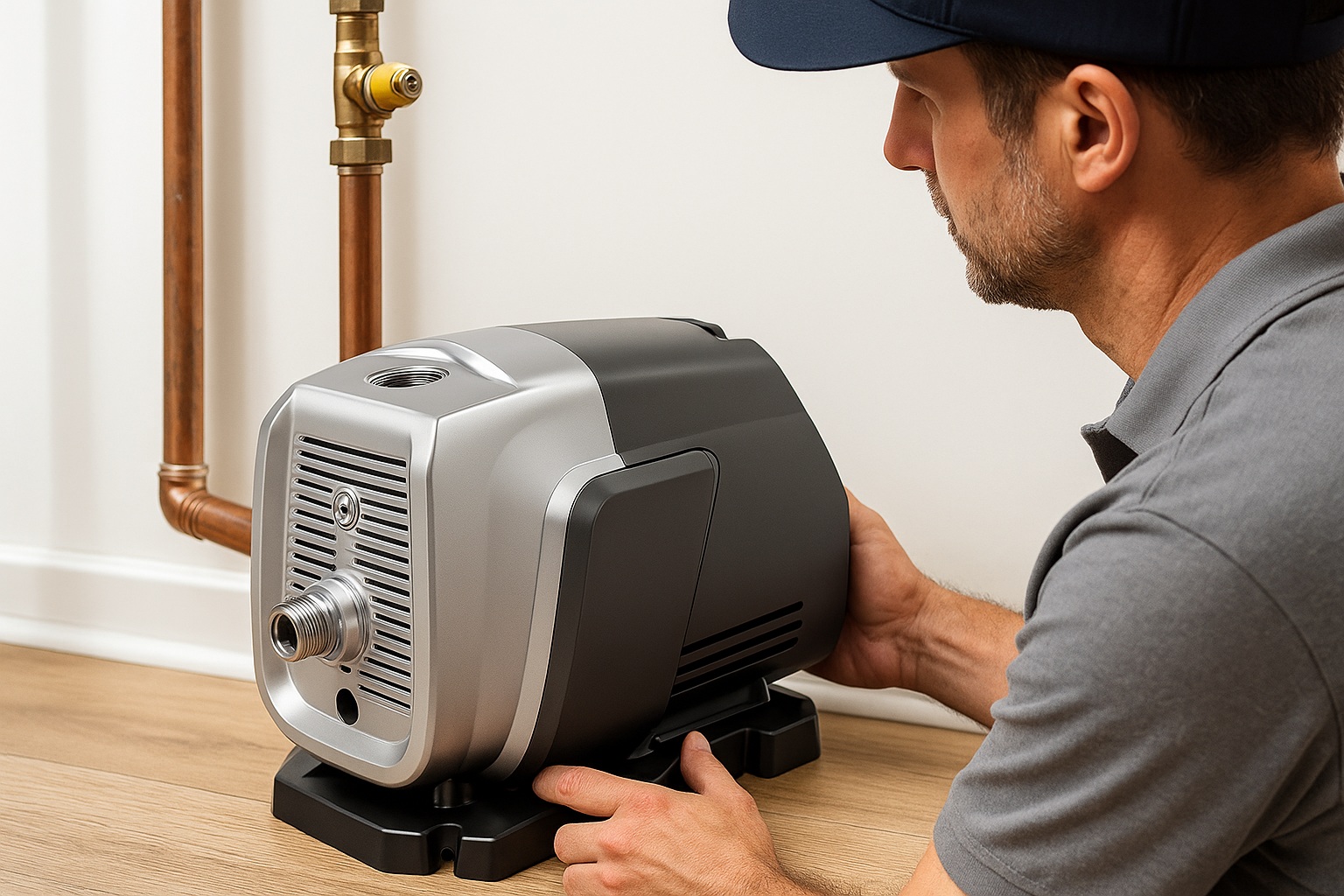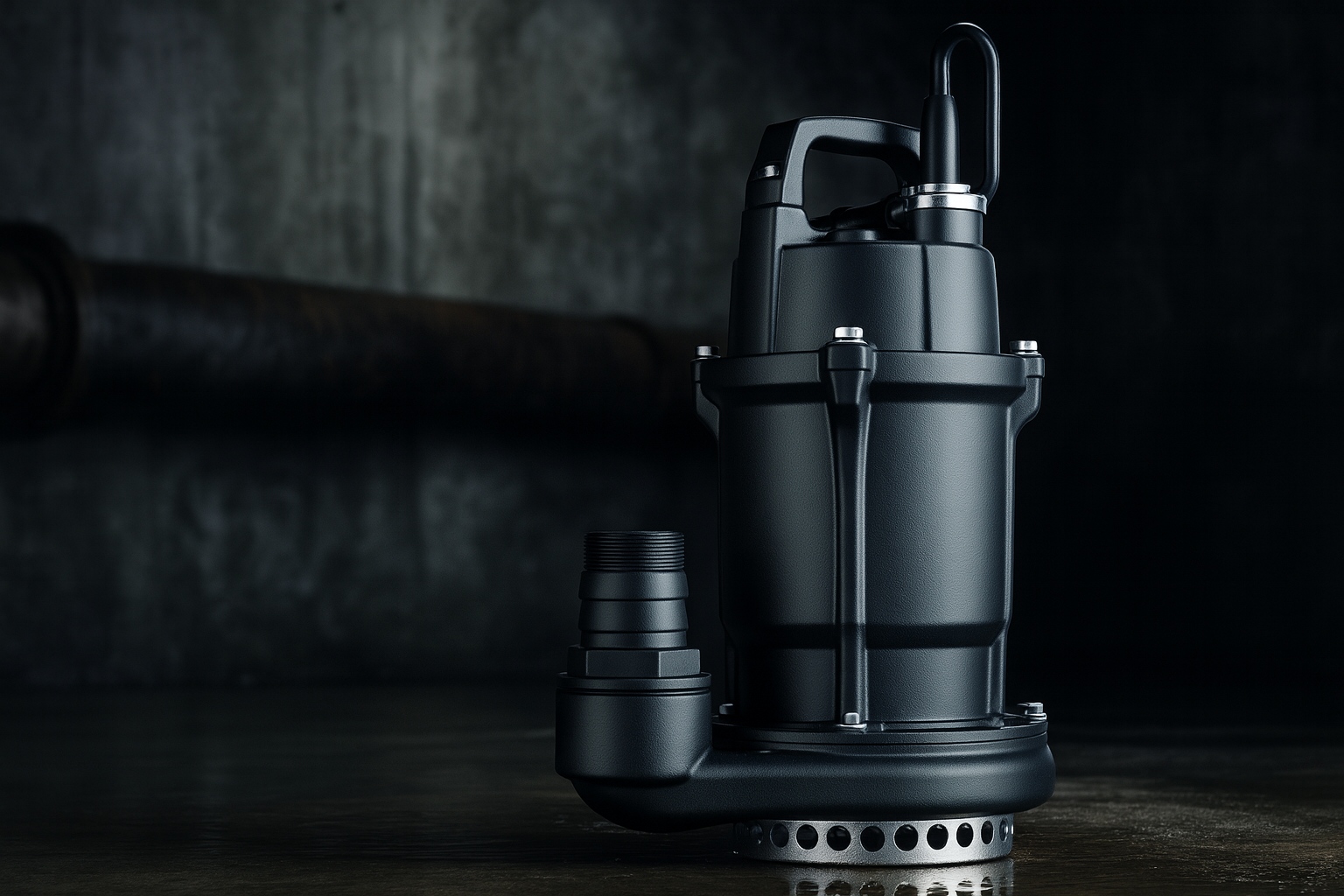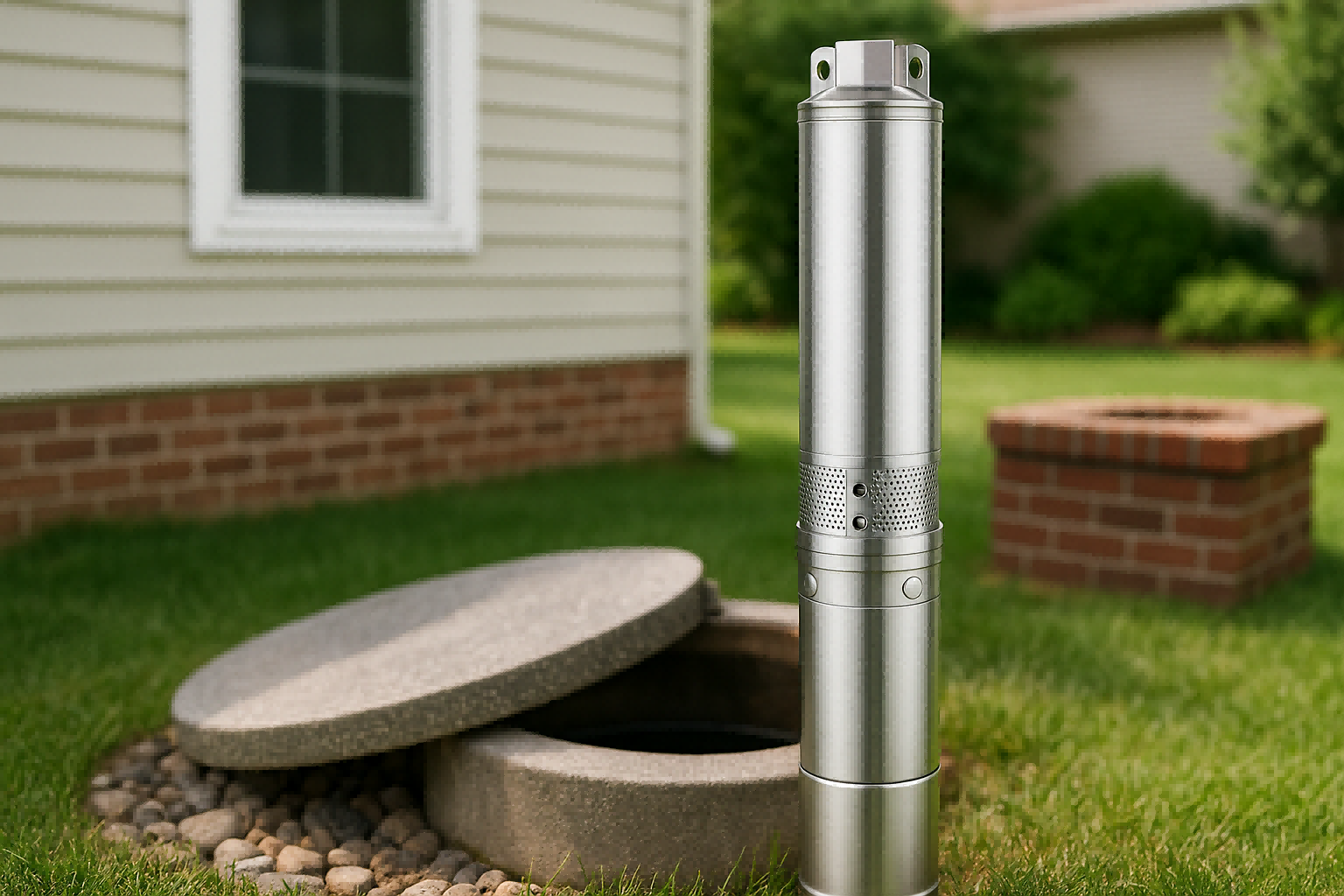Tired of weak showers and slow-filling appliances?
Low water pressure disrupts your entire home.
A modern pump system can provide a permanent fix.
To boost your domestic water pressure at Home, first check that your main shutoff valve is fully open and clean any clogged fixtures. For a reliable, whole-house solution, install an intelligent variable frequency drive (VFD) booster pump. This technology provides strong, constant pressure and significant energy savings.

Before you decide on a solution, it is important to understand the root cause of your pressure problems.
You might be surprised to find a simple fix.
However, many homes require a more advanced approach to achieve理想 water flow.
This guide will help you diagnose the issue and explore the best ways to restore powerful water pressure to your home.
Let's dive into the common culprits and their solutions.
What causes low water pressure in the house?
Are you wondering why your water flow is just a trickle?
The problem might be simpler than you think.
Hidden issues like partially closed valves or clogged pipes are common culprits.
Low water pressure is often caused by several key problems. These include a partially closed main water valve, clogged pipes from mineral buildup, or small, undetected leaks in your plumbing system. Sometimes, high demand in your neighborhood can also be the cause.
Understanding the specific cause of your low water pressure is the first step toward finding the right solution.
Some issues are quick DIY fixes, while others point to a need for a system upgrade.
Let's break down the most frequent problems you might encounter.
Simple Mechanical Problems
Many pressure issues start with a simple mechanical block.
Your home has two important valves that control water flow.
The main shutoff valve is usually inside your home, often under the kitchen sink.
The water meter valve is typically outside.
If either valve is not fully open, it will restrict the water entering your home.
This is a common issue after plumbing work or in a new house.
Gradual System Degradation
Over time, your plumbing system can degrade.
This is a very common source of pressure loss, especially in older homes.
Clogged Pipes: Mineral deposits are a primary cause. In areas with hard water, calcium and magnesium can build up inside your pipes. This build-up, known as scale, slowly narrows the pipe's diameter. It effectively acts like a clog, restricting water flow. Rust from older iron pipes can also break off and create obstructions.
Hidden Leaks: Even a small leak can cause a significant drop in pressure. Water is escaping the system before it reaches your taps. You can perform a simple leak test. First, turn off all water-using appliances. Then, check your water meter.Wait for two hours without using any water. Check the meter again. If the reading has changed, you likely have a leak somewhere in your system.
External and Demand-Based Factors
Sometimes the problem isn't inside your house at all.
Your water pressure can be affected by your surroundings and usage patterns.
High Household Demand: Does your shower pressure drop when someone flushes a toilet? This happens when multiple appliances are demanding water at the same time. The available water supply is split, reducing the pressure at each point.
Neighborhood Peak Hours: Your entire street might experience low pressure during peak times. This usually occurs in the morning and evening. Everyone is showering, washing dishes, or watering lawns at once. This high demand on the municipal supply lowers the pressure for everyone.
| Cause | Where to Check | DIY Fix or Pro? |
|---|---|---|
| Obstructed Shutoff Valve | Under the kitchen sink or where water enters the house. | DIY: Ensure the valve is fully open (turn counter-clockwise). |
| Clogged Pipes | Affects one or multiple fixtures. Look for mineral buildup. | Pro: Requires a plumber to clean or replace the pipes. |
| Hidden Leaks | Check your water meter reading over a 2-hour period. | Pro: A plumber is needed to locate and repair the leak. |
| High Water Demand | Pressure drops when multiple taps are on. | Solution: Stagger water use or install a booster pump. |
How to fix low water pressure in your home
You have identified the likely cause.
So, what is the next step?
You have several options, from simple adjustments to a full system upgrade.
To fix low water pressure, you can start with simple steps like cleaning showerheads and ensuring valves are open. For a comprehensive and lasting solution, installing an intelligent booster pump is the most effective method. This guarantees strong, consistent pressure throughout your home.
Let's explore the permanent solution that modern technology offers.
While simple fixes can help, they often don't address the core problem of an insufficient municipal supply or demanding household use.
An intelligent booster pump is designed to solve these issues directly.
It actively manages your home's water pressure.
The Ultimate Solution: An Intelligent VFD Booster Pump
A Variable Frequency Drive (VFD) booster pump is the most advanced solution available today.
It is not just a pump; it is a smart water management system.
It uses a sophisticated motor and controller to deliver a truly superior experience.
How does it work?
A VFD pump uses sensors to monitor your home's water pressure in real time.
When you turn on a tap, the pressure starts to drop.
The pump's intelligent controller detects this change instantly.
It then adjusts the motor's speed to pump exactly enough water to maintain your desired pressure.
This process is seamless and ensures you never feel a fluctuation.
Here is a breakdown of the core technology:
- Permanent Magnet Synchronous Motor (PMSM): These motors are incredibly efficient and quiet. They offer more power in a smaller size compared to traditional motors.
- Variable Frequency Drive (VFD) Controller: This is the "brain" of the system. It precisely controls the motor's speed, ramping it up and down as needed. This "soft start" and "soft stop" function reduces wear on the pump and plumbing, preventing water hammer.
- Constant Pressure Supply: The combination of VFD and a pressure sensor ensures the pressure at your tap remains stable. It will stay the same whether one shower is running or three.
Why is this better than a traditional pump?
Traditional booster pumps operate on a simple on/off cycle.
They run at full speed until they fill a pressure tank, then they shut off.
This leads to several problems.
| Feature | Intelligent VFD Pump | Traditional Booster Pump |
|---|---|---|
| Energy Use | Highly efficient. Uses only the power needed. Up to 50% energy savings. | Inefficient. Always runs at 100% power, wasting energy. |
| Pressure Stability | Perfectly constant pressure. No fluctuations. | Fluctuating pressure as the pump cycles on and off. |
| Noise Level | Ultra-quiet operation, often below 50dB. | Loud. The frequent on/off cycles are noisy and disruptive. |
| Pump Lifespan | Longer life due to soft starts and reduced cycling. | Shorter life due to the stress of frequent, abrupt starts. |
| System Protection | Advanced protections against dry running, overheating, and leaks. | Minimal or no built-in protection. |
By choosing a modern VFD booster pump, you are not just boosting pressure.
You are investing in a smarter, more efficient, and more reliable water system for your entire property.
It solves the problem permanently and provides a level of comfort that simple fixes cannot match.
When should I call a plumber about low water pressure?
You have checked your valves and cleaned your faucets.
The pressure is still low.
Now it is time to consider calling a professional.
If simple checks do not solve your low pressure, you should call a plumber. This is especially true if you suspect broken valves, major pipe clogs, or hidden leaks. A professional can accurately diagnose and safely repair these complex issues.
While some tasks are simple, others carry significant risks if done improperly.
A qualified plumber has the tools and expertise to handle these jobs safely.
They can protect your home from potential water damage.
Let's identify the specific situations where a professional is essential.
Diagnosing Complex Problems
A plumber is a detective for your water system.
They can pinpoint issues that are not obvious to a homeowner.
- Locating Hidden Leaks: You may know you have a leak from a meter test. But where is it? A plumber uses specialized equipment to find leaks behind walls or under floors without causing unnecessary damage.
- Assessing Clogged Pipes: If your entire house has low pressure, the clog might be in the main supply line. A plumber can use a camera to inspect the inside of your pipes. This helps determine the extent of the blockage from minerals or rust.
- Identifying a Failed Pressure Regulator: Some homes have a pressure reducing valve (PRV) where the city water line enters. If this valve fails, it can severely restrict your water pressure. Replacing it is a job for a professional.
Performing Major Repairs
Certain repairs should never be attempted without professional training.
These jobs involve the main water supply and require precision to avoid catastrophic failure.
- Replacing a Broken Water Valve: The main shutoff valve is connected directly to your municipal supply line. A mistake during replacement can lead to major flooding and a very expensive emergency call.
- Pipe Replacement or Re-piping: If your pipes are old, corroded, and clogged, they may need to be replaced. This is a large-scale project that involves cutting into walls and correctly fitting a new plumbing system.
- Installing a Booster Pump System: While the concept is simple, the installation is not. A booster pump system must be connected correctly to your plumbing and electrical systems. In many regions, regulations require a break tank to be installed between the pump and the mains supply. A qualified installer ensures the system is efficient, safe, and compliant with local codes.
Key Considerations for Professional Help
| Symptom | Potential Problem | Why You Need a Pro |
|---|---|---|
| Consistently Dripping Taps | Worn-out washers or valve seats. | Can be more complex than it seems; avoids damaging the fixture. |
| Whistling or Banging Pipes | Trapped air, water hammer, or loose pipes. | Identifies the root cause to prevent pipe damage. |
| Sudden, Major Pressure Drop | A significant pipe burst or a failed PRV. | Requires immediate, expert attention to prevent property damage. |
Hiring a plumber is an investment in your home's health.
It ensures the job is done right the first time.
This saves you money and stress in the long run.
Conclusion
Boosting domestic water pressure involves diagnosing the cause and choosing the right solution.
An intelligent VFD booster pump offers the most effective, reliable, and energy-efficient way to achieve perfect water pressure.
FAQs
What is a good water pressure for a house?
A good water pressure for most homes is between 45 and 80 PSI (pounds per square inch). Anything below 40 PSI is considered low and may require a solution.
Can I increase my main water pressure myself?
You cannot increase the pressure coming from the city supply. However, you can install a booster pump system within your property to increase the pressure for your entire house.
How do you fix low water pressure in a shower?
Start by cleaning the showerhead to remove mineral buildup. Soak it in white vinegar for a few hours. If this does not work, the issue may be with the house's overall pressure.
Does a water softener affect water pressure?
Yes, a water softener can slightly reduce water pressure. This happens because the water has to flow through the resin bed. However, a properly sized and maintained system should have a minimal impact.
Why is my water pressure low in one faucet only?
If low pressure is isolated to one faucet, the problem is likely with that specific fixture. The aerator at the tip of the faucet is probably clogged with mineral deposits. Unscrew it and clean it.
How much does it cost to fix low water pressure?
The cost varies widely. Cleaning a faucet is nearly free. Hiring a plumber for a simple fix might cost a few hundred dollars. Installing a full booster pump system is a larger investment.
Will a new shower head increase water pressure?
A new "high-pressure" shower head does not actually increase your home's water pressure. It simply forces the available water through smaller nozzles, which makes the spray feel stronger.
Can low water pressure be a sign of a major problem?
Yes, a sudden and significant drop in water pressure could signal a major leak or a burst pipe. You should investigate this immediately to prevent water damage to your property.








